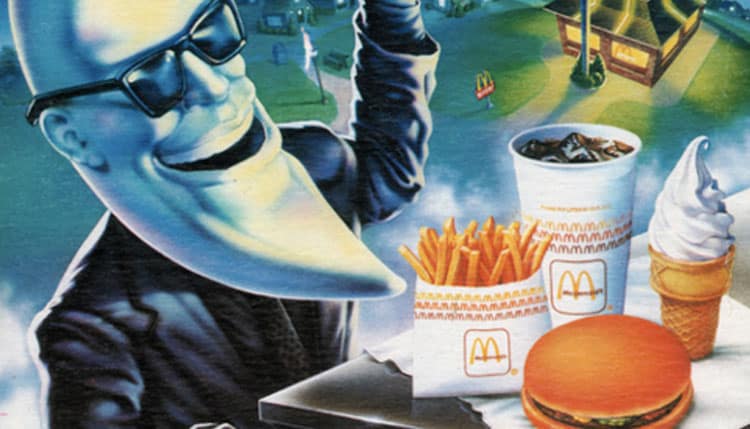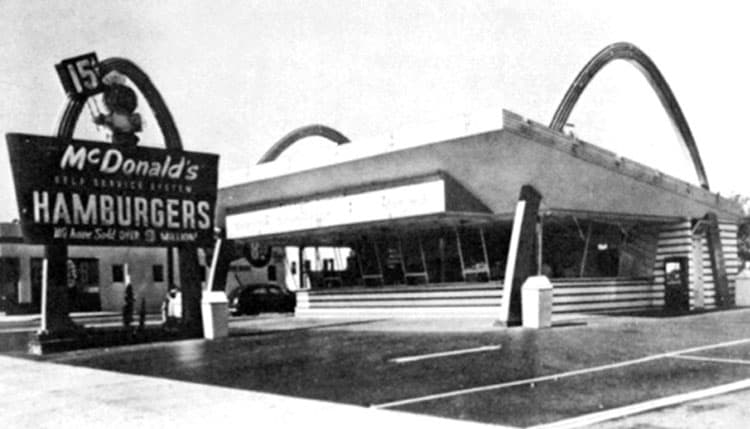McDonald’s vs. In-N-Out: Why Brand is More than an Image
While the debate about the quality of the burger versus another will rage on forever, we look into why one company flourishes while another flounders.
Get a Free Marketing Analysis and Consultation
Nowspeed can review your Website, SEO, PPC, Email or Social Media Campaigns and identify ways to make an immediate impact!
Recently, it was reported that international food giant McDonald’s experienced a 30% drop in net profit for the quarter ending on September 30, 2014. When your quarterly earnings are in the $7B range on average, 30% is no laughing matter. The reasons for this have been analyzed by news sources much more reputable than myself, but according to their own CEO, the main problems are value, customer service, marketing, and a menu that is too complex. This got me to thinking: all of these items stem from a core issue that McDonald’s is dealing with: identity. It also brought me to a local favorite in the same fast food niche, In-N-Out. Let’s break down a few different factors that are playing into McDonald’s recent issues, and how identity has saved In-N-Out from the same very issues.
Health Awareness and Diet – Adapting to Market Changes
If you live in the US, you can’t deny that nutritional health is becoming a huge issue these days. From the President’s wife leading the charge for children’s nutrition, to the huge growth of organic food sales and fad diets, our culture is becoming increasingly aware of what we eat and making a major change in our dietary habits. Seeing these trends, McDonald’s made a major shift in its marketing and menu to include healthier choices to cater to these cultural changes. Seeing those same trends, In-N-Out responded by… doing absolutely nothing. During the same time, Taco Bell released its best seller ever, the Doritos Locos Taco – not exactly healthy. As a result, McDonald’s saw no discernible increase in sales of its healthier choices.
The ability to adapt to market changes is important in quite a lot of cases. For example, did you know that Blockbuster had the opportunity to buy Netflix for next to nothing? Blockbuster failed to see the market changing and has joined Circuit City and Hollywood Video in defunct company heaven, while Netflix’s business is booming. In the case of fast food, however, the market wasn’t shifting in a way that would put the product into the Smithsonian, but rather the market was adapting to include more alternatives into its regular consumption.

Remember the glory days of fast food advertising?
Let’s be honest, nobody is going to see McDonald’s as the go-to place to get a healthy meal. You go there because you want a cheap burger and fries, or to satisfy that midnight-craving for chicken nuggets. In the same way, nobody waits in line at In-N-Out salivating over their grilled chicken salad, but rather their four-by-four animal style with a vanilla shake – not exactly the healthiest meal in the world. Someone wanting to eat healthier may choose to visit a fast food restaurant fewer times overall, but when they go, they still want that giant, greasy burger. McDonald’s failed to keep its image of cheap, quality burgers and fries and tried to push itself as a place to eat salad and apples, and confused its image in the process. Do they even still sell Big Mac’s – when was the last time you saw one advertised? Here’s a reminder for nostalgia’s sake or for those unfortunate enough not to live through the glorious 80’s.
Customer Service – Important but Missing the Point
McDonald’s CEO stressed that customer service is a big issue and a cause of their recent hurts. Sure enough, their average drive-thru wait time has increased over the years and customers are waiting longer to get their order. Surely, no “fast food” restaurant can thrive with overly long wait-times, right? How about In-N-Out, with their world-renowned “impossibly long drive-thru lines“? I would personally consider a 190 second wait at In-N-Out a win in my book.
When analysts tried to pin down the reason for the increase in wait time at McDonald’s, the answer was its expanding menu, which made preparing orders more complicated. Bingo, but they’re missing the point. Sure a few people might be upset at waiting 9 seconds longer, but In-N-Out has not suffered due to the wait time. It’s the image and expectations – if your customers expect one thing, and get another, there’s going to be a disconnect. At In-N-Out, you expect to wait longer because you know that your burger is made “fresh from the time you order” it. At McDonald’s, we’re accustomed to seeing a line of burgers ready to go in the store – all pre-made. That’s what McDonald’s used to be – a place to get a super-cheap, super fast burger. This leads me to the next point:
When Your Identity Was One Thing, and Reality Contradicts It, You Have a Problem
McDonald’s was founded on being a low-price, decent burger. Its original claim to fame was that it was the “home of the 15¢ burger.” Low price comfort food – that was the claim to fame. When I was growing up, I’d hit McDonald’s on $0.29 burger day – it was like Christmas! So why is it that a company founded on pricing is dealing with its prices being too high? Even its famous “dollar menu” is full of items that cost over a dollar. Looking at In-N-Out, prices seem to not be an issue for them – I’d guess that they’ve seen no major shift after price changes (note: In-N-Out is privately owned, so they don’t publish their profits). I don’t have the data to back it up, only my sense that I am extremely aware of how much a McDonald’s burger costs even though I haven’t purchased one in a long time, while I’ve got no idea what a burger costs at In-N-Out.

It even used to be on the sign! McDonald’s used to market itself as the low-price burger. Nowadays, it’s shifted away from that identity and is paying the… well… price.
If you spend most of your company’s history pushing a feature that sets you apart, and then completely abandon that very feature, you have a core problem. Imagine if Wal-Mart suddenly became an expensive place to buy your blue jeans, transmission fluid, or lettuce (seriously – what can’t you buy there now?). It would cause a huge problem as their core identity is as the “low-price leader” – and their target customer would no longer shop there. The same goes for McDonald’s – they’ve slowly increased prices, hoping to fly under the radar (I assume), and now they’re alienating their core customer base in an attempt to cater to the customers that are likely to shop at Whole Foods – there’s a disconnect there somewhere.
Marketing – Control Your Narrative, Don’t Just React to It – And Be Honest with Yourself
As their CEO stated, McDonald’s has a marketing issue and is currently evaluating it. “We are also strengthening our creative messages by placing greater emphasis on the quality of our food and again re-establishing the emotional connection that our customers associate with the McDonald’s experience,” CEO Don Thompson stated. Sure, great – reevaluate your message as a reaction to recent scandals in China and a market perception of quality and emotion.
Or how about remember what your successful message was, that you were a “great place to get a cheap burger”? Sometimes, brands don’t want to admit what they are, and instead try to push a message that is contrary to reality. In-N-Out has built a brand over the years, and they have embraced it. Despite recent pressure on companies like Chick-Fil-A to abandon its religious identity, you’ll still see references to Bible verse on In-N-Out’s cups and burger wrappers. They built that identity from day 1 and have stuck with it. And they haven’t abandoned their commitment to keep their menu simple and retain their common core. I suspect that McDonald’s, in that situation, would dramatically alter its marketing in order to not alienate any holders of any religious belief (or lack thereof) from its customer base. I’m not promoting religion, but rather a commitment to keeping one’s identity.
McDonald’s Has Kept its Brand, but Lost its Identity
McDonald’s is the cream of the crop when it comes to establishing a brand – practically everybody in the world knows and recognizes those golden arches. Kudos to their marketing and branding departments for enforcing a strict set of colors and styles – there is never a doubt that a restaurant is a McDonald’s or what company their ads are advertising. From set colors and shapes, to slogans and more – they’ve done a great job. I can still recite jingles and slogans from back when I was a kid – and I’m willing to bet you can too. But styles and slogans are just a part of the formula.
At some point in the 90s, McDonald’s began the process of abandoning its history and attempted to stay “hip” and ride the wave of trends (I refuse to call it “Mickey D’s” – nothing good in marketing ever came out of the 90s). By expanding its menu, growing uncontrollably, forgetting its roots, and not being aware of its customer base, McDonald’s has found itself in the position it is today – a 30% decrease in profit for the quarter. It’s lost its identity.
When evaluating your own business, maybe you need to take a step back and reflect on what made you what you are today, and do what you can to capture that identity again. Get an outside opinion, do some reputation research, and get to the core of what your business is and its strengths and weaknesses, and do whatever you can to hold on to who you are; you can survive a re-brand, but you may not survive a loss of identity.
So let's
talk.
We're always excited to dig into the details of your company and what strategy can help you meet your goals. So let's talk and lay out a plan for success!